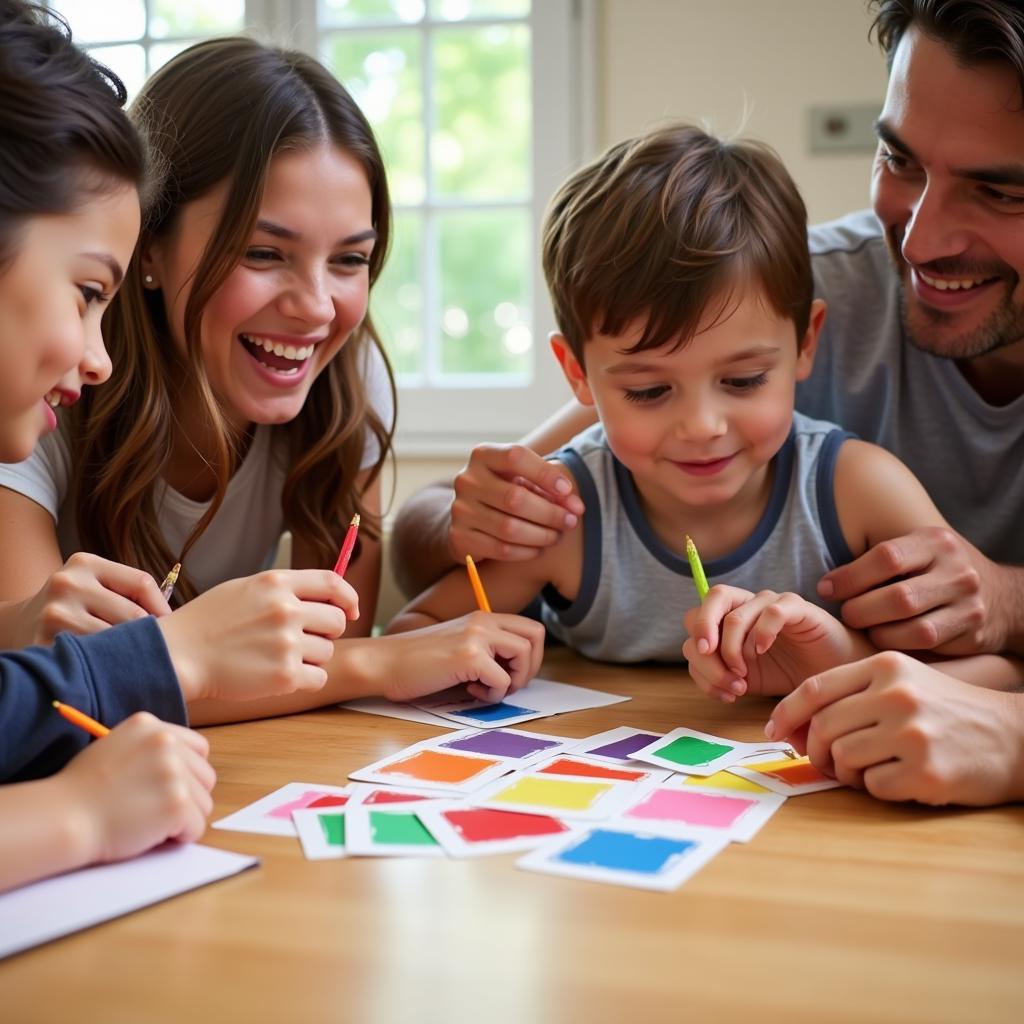Understanding colors is a significant developmental milestone for children, laying the foundation for cognitive growth and creative expression. As parents and educators, we often wonder, “When Should Kids Know Their Colors?” The answer, like most things concerning child development, isn’t a one-size-fits-all. However, understanding the typical stages can provide valuable insights into your child’s progress and guide your interactions with them.
Decoding the Rainbow: Color Recognition in Early Childhood
While every child is unique, most begin their colorful journey as early as 18 months. At this age, they start noticing differences in hues and might even attempt to sort objects based on color. Don’t expect perfect categorization just yet! This early stage primarily involves visual exploration and developing an awareness of the world’s vibrancy.
Talking Colors: From Recognition to Naming
As children approach their second birthday, their color vocabulary starts to blossom. They begin associating names with specific colors, often starting with primary colors like red, blue, and yellow. By the age of three, many kids can confidently identify and name these basic colors.
Engage your child in color-focused activities during this crucial phase. Simple games like “I Spy” with colors, sorting toys by hue, or even reading color-themed books can significantly boost their learning.
 Family Enjoying a Color Learning Game
Family Enjoying a Color Learning Game
Beyond the Basics: Expanding the Color Palette
Between the ages of three and five, children’s color comprehension advances rapidly. They become comfortable with a wider range of colors, including secondary colors like green, orange, and purple. They might even start recognizing subtle shades within the same color family, distinguishing between light blue and dark blue, for example.
This stage presents an ideal opportunity to introduce more nuanced color concepts. Art projects using various mediums, mixing playdough to create new colors, and even exploring nature’s colorful tapestry can further enhance their understanding and appreciation for the spectrum of hues surrounding them.
Is Your Child on Track? Understanding Individual Pacing
While these are general milestones, it’s essential to remember that every child learns and develops at their own pace. Some children might be captivated by colors from a very young age, while others might take a little longer to grasp the concept.
If you have any concerns about your child’s color recognition or overall development, don’t hesitate to consult your pediatrician or a child development specialist. They can provide personalized guidance and address any specific questions you may have.
Conclusion: Embracing the Colorful Journey of Learning
Learning colors is an exciting adventure for children, opening doors to creativity, language development, and a deeper understanding of the world around them. By understanding the typical stages of color recognition and engaging your child in fun, interactive activities, you can foster their love for colors and support their developmental journey every step of the way.
FAQs
1. What if my child is struggling to learn colors?
Don’t panic! Every child learns at their own pace. Try using different teaching methods like incorporating colors into everyday activities or utilizing educational toys and games. If you are still concerned, consult your pediatrician or a child development specialist.
2. At what age should I be concerned if my child isn’t recognizing colors?
If your child is past the age of three and still struggling to identify basic colors, it’s a good idea to talk to your pediatrician. They can assess your child’s development and recommend any necessary interventions.
3. Are there any activities I can do at home to help my child learn their colors?
Absolutely! Engage them in color-themed games, read books focusing on colors, or encourage creative activities like painting and drawing. Even simple tasks like sorting laundry by color can turn into a fun learning experience.
4. What are some signs that my child might have a color vision deficiency?
If your child consistently misidentifies colors, especially primary ones, or has difficulty distinguishing between certain color combinations, it might be a good idea to have their vision checked by an eye doctor.
5. Can learning colors benefit my child’s overall development?
Yes, color recognition plays a crucial role in cognitive development. It enhances visual perception, improves memory and concentration, and fosters creativity and imagination.
For further information on this topic, explore our articles:
Need personalized guidance on creating a vibrant and stimulating environment for your child? We’re here to help! Contact us at 0373298888, email us at [email protected], or visit our showroom at 86 Cầu Giấy, Hà Nội. Our team is available 24/7 to answer your questions and assist you in making your home a colorful haven for your little ones.